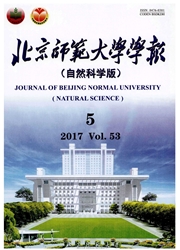

 中文摘要:
中文摘要:
以喀什地区各县市水资源利用数据为基础,对喀什地区2001—2007年间的水资源利用数量、类型及空间变化进行了分析.结果表明,6年间喀什地区总用水量呈增长趋势,其中,农业用水增加量最大,生态环境用水增加量位居第二,工业、城镇公共和生活用水量的增加量均比较少.各县市在水资源利用类型的变化上也有一定的差异.6年中除了伽师县和疏附县总的用水量减少以外,其他县市的用水量都呈增长趋势,其中以莎车县的用水增长量最大,麦盖提、叶城和巴楚县占第二,喀什市和泽普县排在第3位.从不同的水资源利用类型来看,除了伽师县和疏附县以外,其他县市农业用水量都呈增长趋势;喀什市和叶城县的工业用水量增长量最大;喀什地区所有县市的城镇用水量都呈增长趋势;生活用水量的变化比较特殊:莎车县、叶城县、巴楚县、英吉沙县、麦盖提县、疏附县和疏勒县等呈增长趋势,而岳普湖县、伽师县、泽普县和喀什市呈减少趋势;除了伽师县以外,其他的县市的生态环境用水量都呈增长趋势.笔者认为,人口因素、经济因素和城市化因素是喀什地区水资源利用结构变化的主要驱动力.
 英文摘要:
英文摘要:
Located in the middle of central Asia,Kashgar district has a very dry climate(total water resources of 97.68×108 m3).In recent years,along with economic development and population growth,demand on water resources in Kashgar district increased rapidly and significant changes in water utilization have occured.Based on water use data in each county,this paper analysed total water uses,types and spatial changes from 2001-2007.It was found that,during the 6 years in this study,total water use increased,but there were marked disparities in different water use types.Agricultural water use increased most rapidly,followed by water used for biological protection.Industrial water use,public water use and consumption increased slightly.There were considerable spatial disparities in water use types in different counties and cities.In these 6 years,except for the Payzawat county and Shufu county,total water use showed increasing trend,among which Yarkent county demonstrated the highest increase.From the view point of different water use types,water used for agriculture increased in all counties excluding Payzawat and Shufu counties;water use for industry showed the highest increase in Kashgar city and Kagilik county;water for public use increased in all counties and cities;water use for consumption increased in Yarkent,Kagilik,Barchuk,Yengisar,Makit,Shufu and Shule counties,but decreased in Yopurga,Payzawat counties and Kashgar city;water use for biological protection increased in all counties and cities with the exception of Payzawat county.It is concluded that population growth,economic development and urbanization are the main driving factors for changes in water use in Kashgar district.
 同期刊论文项目
同期刊论文项目
 同项目期刊论文
同项目期刊论文
 期刊信息
期刊信息
